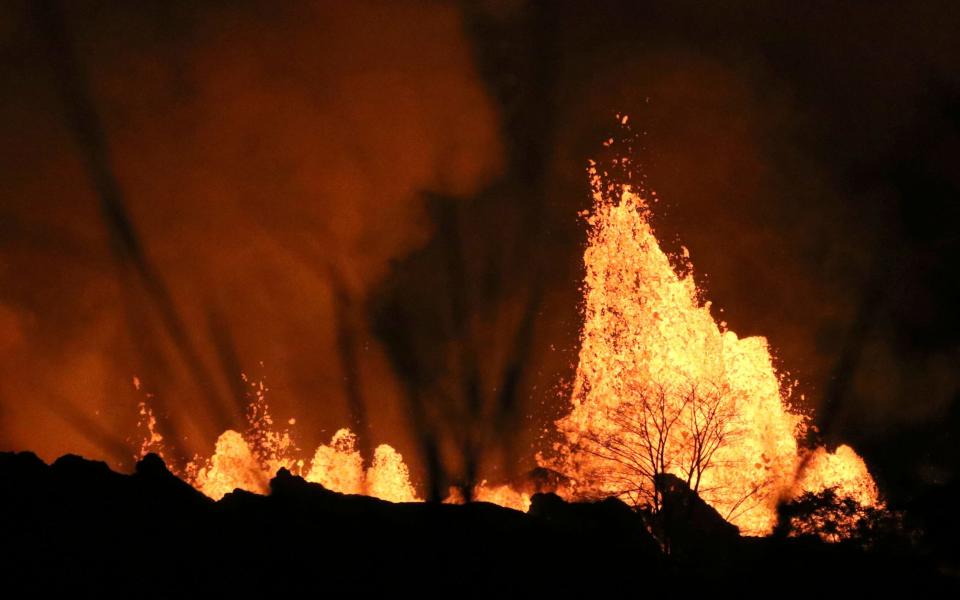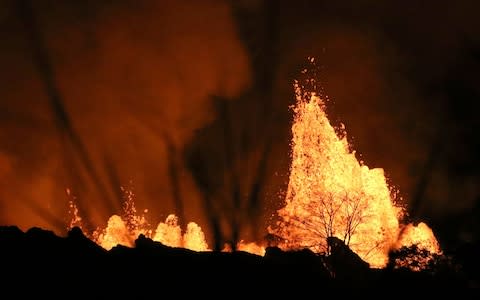What is 'laze', the latest deadly threat generated by Hawaiian volcano?

After explosive eruptions, earthquakes and rivers of burning lava, residents and tourists on Hawaii now have something else to fear: Lava haze or “laze”.
Officials say two lava flows have reached the Pacific Ocean off Hawaii’s Big Island, sending dangerous clouds of steam, hydrochloric acid and glass particles into the air.
The Hawaii County Civil Defense agency, warned: "Be aware that the laze plume travels with the wind and can change direction without warning.”
The clouds are the latest hazard from Mount Kilauea’s eruption.
Geologists say it is among the worst events from one of the world’s most active volcanoes in more than a century.

What is going on in Hawaii?
The Kilauea volcano has been erupting ever since 1983 but entered a new, particularly violent phase a little over two weeks ago. Its crust has cracked into more than two dozen fissures spewing lava.
At times, steam-driven reactions have thrown “ballistic blocks” - boulders the size of kitchen appliances – hundreds of yards. Ash clouds have been pumped six miles into the sky.
The result is that two thousand people have been ordered from their homes, at least 44 houses and buildings have been destroyed, and lava flows are travelling further than they have done previously.
Hawaii's erupting Kilauea volcano, in pictures
Levels of toxic sulphur dioxide gas have also tripled in the past two days, according to authorities.
What happens when lava meets sea water?

When hot lava – reaching temperatures of more than 1000C - meets water it triggers a string of chemical reactions and generates massive amounts of steam. At the same time the lava cools rapidly, forming into a type of glass.
As it shatters, the particles get picked up in the turbulent clouds of gas.
"Just like if you drop a glass on your kitchen floor, there's some large pieces and there are some very, very tiny pieces," said Janet Babb, a geologist with the Hawaiian Volcano Observatory. "These little tiny pieces are the ones that can get wafted up in that steam plume."
Scientists call the sheets of glass Limu O Pele, or Pele's seaweed, named after the Hawaiian goddess of volcano and fire.
How volcanoes erupt
As if that weren’t enough, the high temperatures have another effect. As well as boiling away the water it heats up salt molecules left behind, such as magnesium chloride which reacts with the steam to produce hydrogen chloride gas.
How dangerous is it?

The acid is as corrosive as diluted battery acid.
Dr Alvin Bronstein from the Hawaii State Department of Health, said: "If one were to be near the laze, because of the various acids, it would be corrosive to the eyes, the nose and respiratory tract, and the skin."
Protective face masks have been distributed to protect residents from volcanic ash. Although they will protect from glass particles they will not be much use from the acid gas.
Who is at risk?

The good news is you have to be right on top of the area of laze formation to suffer the worst effects. No major injuries have yet been reported although in 2000 it contributed to two deaths, according to the Hawaiian Volcano Observatory.
"This hot, corrosive gas mixture caused two deaths immediately adjacent to the coastal entry point in 2000, when seawater washed across recent and active lava flows," it said.
For now, people close to the coast, on land or in boats close to shore, run the greatest risk.
The US Coast Guard is enforcing a “lava entry safety zone” keeping boats at least 300 metres from the entry of the flow into the water.
